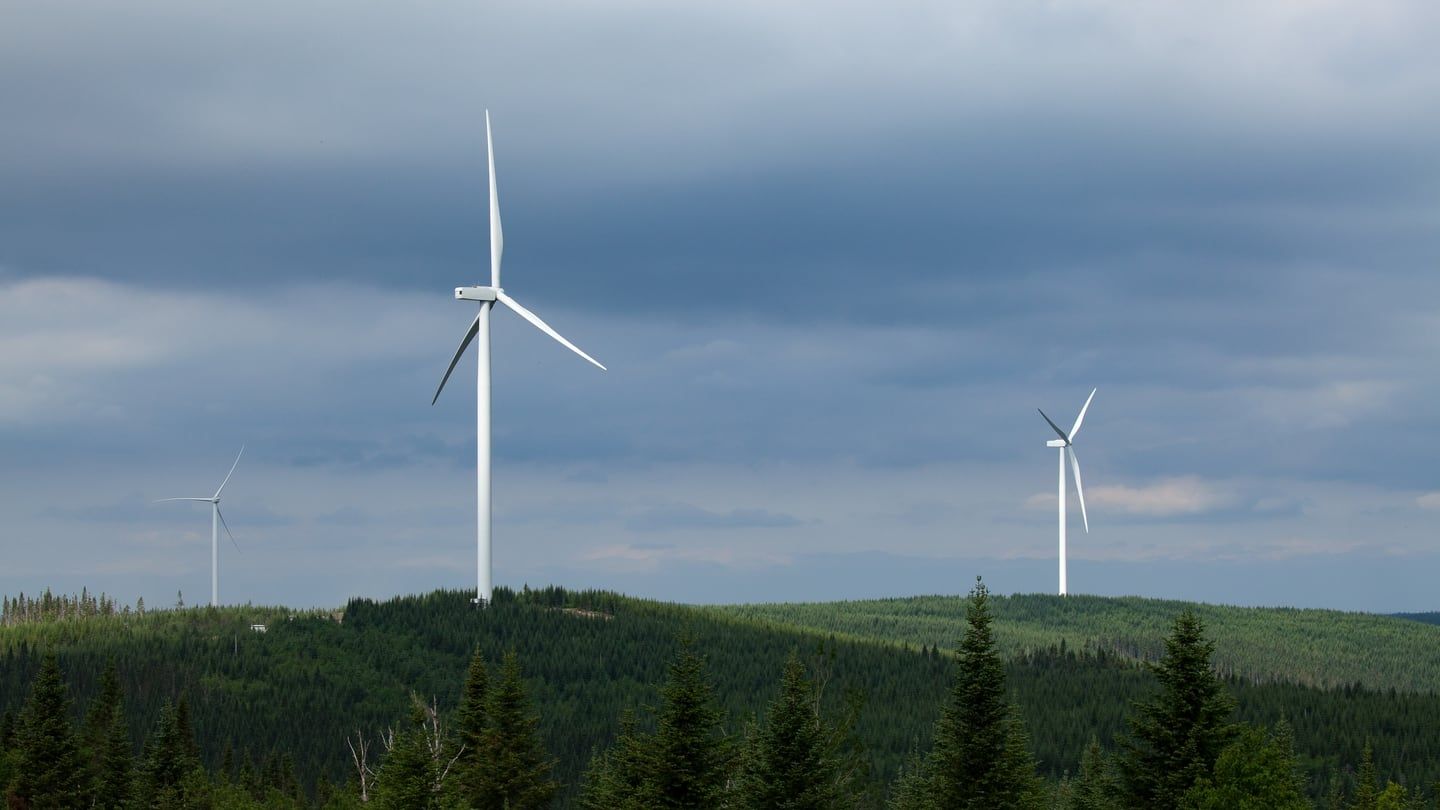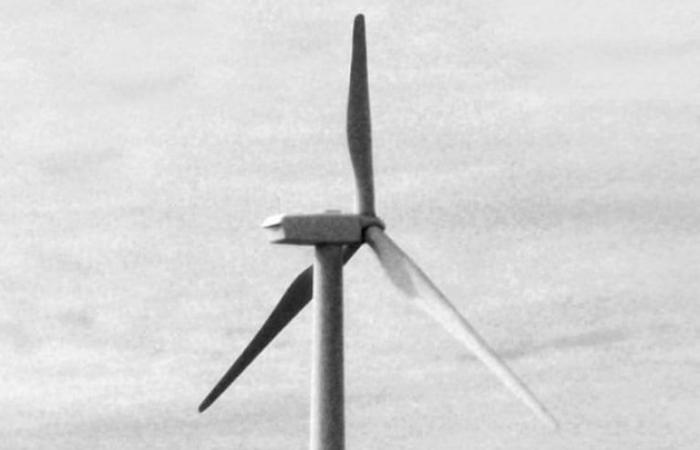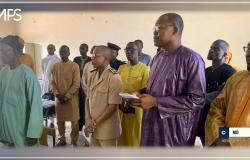These developers, like the Innergex company from Longueuil, took advantage of the Renewable Energy Forum, held June 11 to 13 in Carleton-sur-Mer, in Gaspésie, to speak with representatives of Hydro-Québec with the aim of showcase their skills and ability to help this company add those 10,000 megawatts (MW) of electricity.
Michel Letellier, general manager of Innergex, believes that the role of private developers can be all the more decisive as Hydro-Québec plans to use transmission lines with a capacity of 735 kilovolts for future wind initiatives.
This was not, or little, the case with the arrival of the first 4,000 megawatts of wind energy, a development carried out by private developers selling their production to Hydro-Québec.
During the years of shortage of calls for tenders, factories manufacturing wind tower components turned to exports to continue their activities. This was the case for LM Wind Power in Gaspé (photo), but other plants had more difficulties. (Gilles Gagné/Special collaboration)
Mr. Letellier uses an analogy to rule that Hydro-Québec would have every advantage in integrating companies like Innergex as co-owners of the parks, in its attempt to develop 10,000 megawatts by 2035. The Innergex portfolio reached a production capacity of 4,328 megawatts of renewable energy, an amount largely generated by wind turbines.
“It’s as if Hydro-Québec had realized that wind power is really important for decarbonization. There, they unblocked the transmission lines, the 735 kilovolt lines. They open them (for projects associated with 10,000 megawatts),” illustrates Mr. Letellier.
Before, wind power was not really important to Hydro-Québec. Now, if we want to have energy to decarbonize the economy and accommodate large industries, we have no choice but to accelerate wind development.
— Michel Letellier, general manager of Innergex
“Where is the resource and the transportation highway? They are in wind power. And this is the big revelation, this is where Hydro-Québec took a strategic turn. They [ses dirigeants] are ready to accept wind power on the highway. We no longer have to drive on the country lane, we no longer have to drive on the small forest path.”
Until now, Quebec wind farms have mainly been built on the outskirts of major transmission lines, which has often limited their size, due to the capacity of these lines.
The electricity sales agreements affecting several wind farms will be renewed shortly. Innergex advocates a gradual approach to replacing equipment in this regard to avoid production breakdowns. (Jean-Simon Gagné)
It is admitted by Hydro-Québec that it will be necessary in particular to increase the capacity of the transmission lines in the Rivière-du-Loup sector, going towards the east of Bas-Saint-Laurent and towards the Gaspésie, if other Major wind farm projects are expected to see the light of day there.
The people at Innergex are of the opinion that this bottleneck limiting the construction of major parks is even present in the Lévis sector, always looking east.
“It’s expensive to integrate these major projects in order to make the network more reliable. To enter 735 kilovolts, it takes large parks, to amortize all these infrastructures,” specifies Michel Letellier, who received the title of personality of the year in Quebec in the renewable energy sector on June 12.
This relevance of the wind energy sector convinces Mr. Letellier to work patiently to convince the leaders of Hydro-Québec to leave a place for the private sector in the deployment of 10,000 megawatts. Until now, Hydro-Québec management has indicated that the private sector would have a place in this deployment, but it remains a little vague. Developers do not know exactly whether their services will be retained as consultants or partners in the ownership of future parks.
“We see it as an opportunity; it has been proven that Innergex can develop sustainable projects with indigenous and non-indigenous people. I think that Hydro-Québec will leave room for the private sector in future development. We invite them to do it,” underlines Michel Letellier.
“In his speech, the president of Hydro-Québec, Michael Sabia, talks about inviting, making room for the private sector in a call for tenders, to be competitive. Customers want competitive energy. We have the least expensive energy in North America in Quebec,” he adds.
In fact, he recalls, 3,000 of the 10,000 megawatts targeted by Hydro-Québec have already been allocated, although they remain to be erected.
The imminent renewal of existing wind farms
Between now and the next 12 years, the agreements between the owners of the first Quebec wind farms and Hydro-Québec will have to be renewed. These agreements generally had a duration of 20 years and the next renewal concerns the Baie-des-Sables wind farm, near Matane. The agreement will expire in December 2006. Innergex owns this park, and others, for a total of 589.5 MW of capacity.
Questioned by The sun in order to decide on the way in which these renewals should be carried out, Michel Letellier specifies that a smooth transition is necessary in order to maximize production.

The complaints against Hydro-Québec do not stop at the involvement of the private sector in the ownership of future wind farms. (Innergex)
“In theory, for the same resource, we could benefit from a 30% gain in terms of capturing green energy from the wind if we replaced all current equipment with new equipment, but wind is not equal everywhere . So, in 2026, we will have better, more powerful machines, which means a greater range to take advantage of the wind resource,” he explains.
“At Innergex, we would like [toutefois] a more integrated version of these agreement renewals. We do not want to dismantle machines that are still viable for the benefit of short-term financial gain. To contribute to decarbonization, we must maximize the use of the machine,” explains Mr. Letellier.
“We would like to have a long-term transition, to make a hybrid transition. Instead of dismantling and not producing for a year or two, we could renew in the long term, think of a hybrid model in which we could have old and new turbines coexist,” he continues.
— Michel Letellier, general manager of Innergex
The simplest thing is to throw everything away and start again with new machines. But the site [de production], it will be there in 5, 10 or 15 years and there will be no interruption in production. We subcontract, locally, the repair of these turbines, which makes it possible to develop a regional maintenance economy, and to create a pool of spare parts,” he concludes.
The prize received by Michel Letellier was awarded at the Renewable Energies Conference, held in Carleton-sur-Mer and organized by the Nergica research center in Gaspé.
Don’t forget manufacturing jobs
The complaints against Hydro-Québec do not stop at the involvement of the private sector in the ownership of future wind farms.
The mayor of Matane, Eddy Métivier, invited Mathieu Johnson, vice-president of strategies and development at Hydro-Québec, to “chart the paths towards collective success”, by encouraging the integration of regional and Quebec content in the components which will constitute the next wind farms.
Mayor Métivier was referring in particular to the first two major calls for tenders totaling 3,000 megawatts and launched from 2003. Minimum standards of regional and Quebec content were then integrated into the calls for tenders, which gave birth to a Quebec industry component manufacturing.
Matane lost 200 jobs with two wind tower manufacturers, Enercon and Marmen, in the trough of calls for tenders. Two hundred jobs in Matane is like 20,000 in Montreal. How sensitive is Hydro-Québec in ensuring local content this time?
— The mayor of Matane, Eddy Métivie
“The undeniable advantage is the reduction in GHGs, when we think that the towers risk being manufactured in Asia,” notes Eddy Métivier, who already worked as purchasing director at the Enercon plant in Matane. , now closed.
Production at the Marmen factory has been slowed or suspended since the end of 2021 due to a lack of orders.
“When I was at Enercon, we went to see Ontario Hydro, which gave points in calls for tenders for projects whose components and materials came from Ontario. It was the jackpotover there,” notes Mr. Métivier.
Mathieu Johnson said he took note of these observations. He also specified, considering global tensions, that it was useful to “mitigate geopolitical risk” by relying “on shorter supply chains”.
To wind developers, he clarified that we would “deprive ourselves of a lot of informal knowledge and opportunities to create wealth together” if we did without them.








